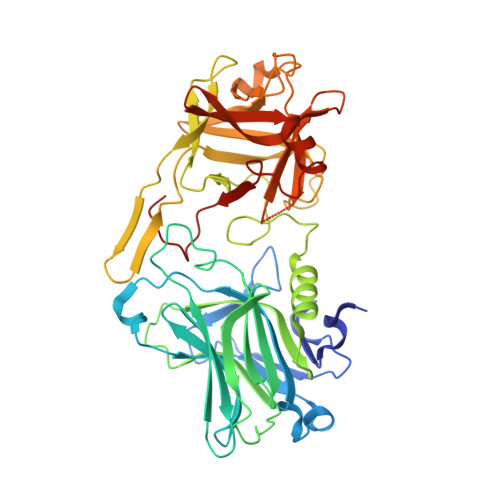Structural Features of Clostridium botulinum Neurotoxin Subtype A2 Cell Binding Domain.
Gregory, K.S., Mahadeva, T.B., Liu, S.M., Acharya, K.R.(2022) Toxins (Basel) 14
- PubMed: 35622602
- DOI: https://doi.org/10.3390/toxins14050356
- Primary Citation of Related Structures:
7Z5S, 7Z5T - PubMed Abstract:
Botulinum neurotoxins (BoNT) are a group of clostridial toxins that cause the potentially fatal neuroparalytic disease botulism. Although highly toxic, BoNTs are utilized as therapeutics to treat a range of neuromuscular conditions. Several serotypes (BoNT/A-/G, /X) have been identified with vastly differing toxicological profiles. Each serotype can be further sub-categorised into subtypes due to subtle variations in their protein sequence. These minor changes have been attributed to differences in both the duration of action and potency for BoNT/A subtypes. BoNTs are composed of three domains-a cell-binding domain, a translocation domain, and a catalytic domain. In this paper, we present the crystal structures of the botulinum neurotoxin A2 cell binding domain, both alone and in complex with its receptor ganglioside GD1a at 1.63 and 2.10 Å, respectively. The analysis of these structures reveals a potential redox-dependent Lys-O-Cys bridge close to the ganglioside binding site and a hinge motion between the H CN and H CC subdomains. Furthermore, we make a detailed comparison with the previously reported H C /A2:SV2C structure for a comprehensive structural analysis of H C /A2 receptor binding.
- Department of Biology and Biochemistry, University of Bath, Claverton Down, Bath BA2 7AY, UK.
Organizational Affiliation:



















